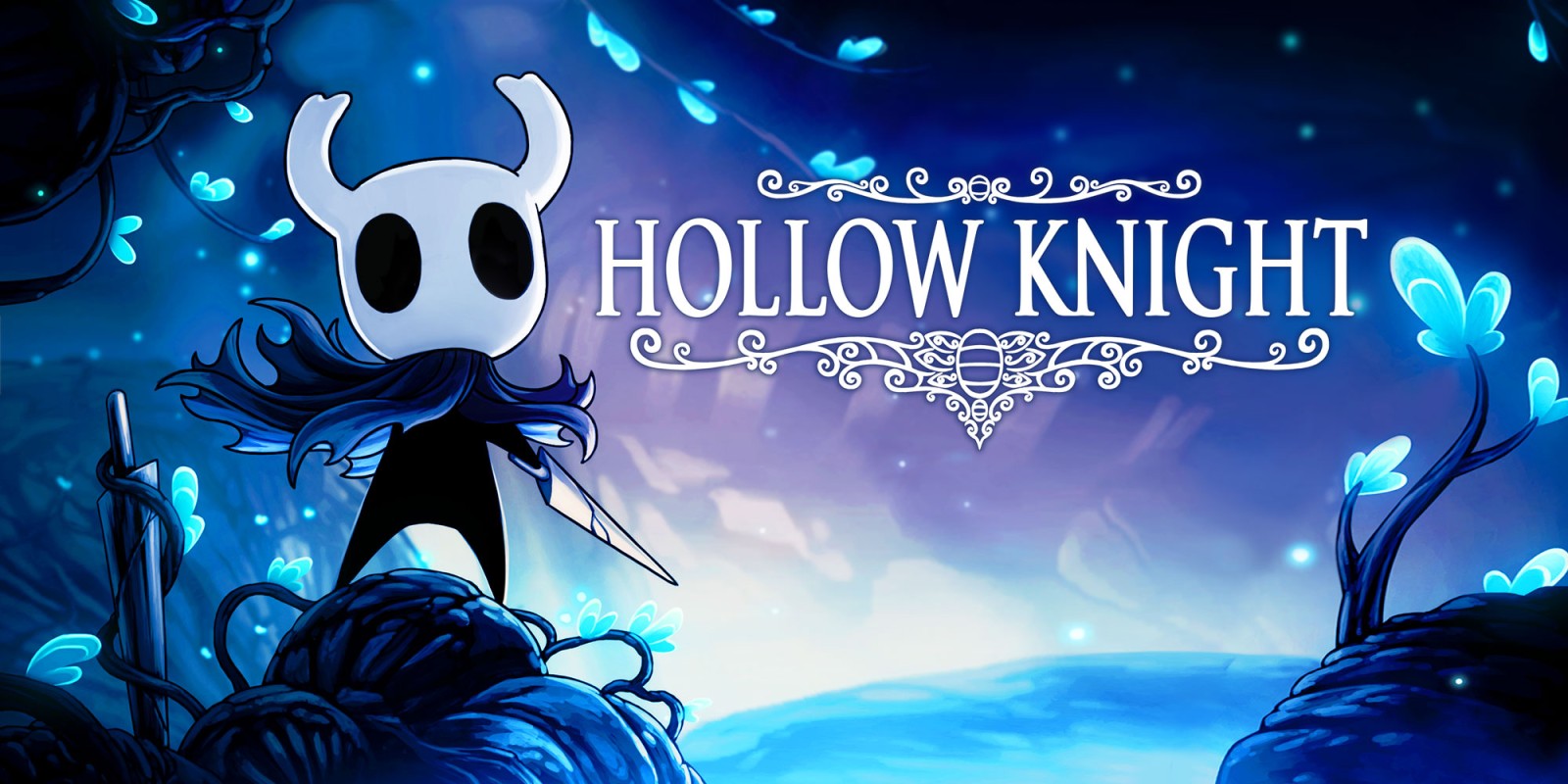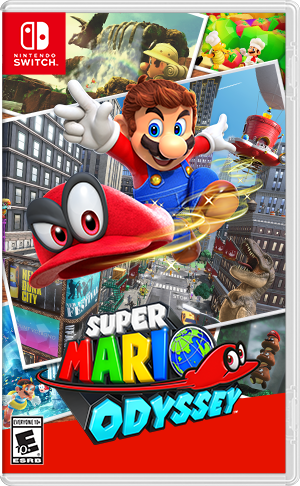Hollow Knight
 |
| Released on the Nintendo Switch on June 12, 2018 by Team Cherry, Hollow Knight is an action-platformer, featuring a vast, mysterious underground world. |
Hollow Knight takes place in a below-ground series of tunnels and habitats called Hallownest. The kingdom of Hallownest has decayed and fallen into ruin, now populated by a small smattering of friendly, sentient bugs, and a large smattering of infected, unfriendly ones. The bugs are animated in a unique style that slightly references classic Disney cartoons and looks beautiful. The environments are ornately detailed and highly atmospheric, full of light and effect. Scattered rays filter through cobwebbed caves. Fireflies dance inside glass bowls atop iron poles. An ancient underground city is drenched in animated rain as gorgeous as that in any Studio Ghibli film--Ghibli perhaps being the best reference for Hollow Knight's visuals, though Hollow Knight has a darker, grubbier bent than the work done by that hallowed studio. That was a bug reference. This game is about bugs.
The music matches the visuals' mysterious sense of melancholy to a brilliant to degree, bordering on virtuoso. At one point I had to check to see if Thomas Newman (The Shawshank Redemption, American Beauty) did the composition. Hollow Knight's music was actually composed by an Australian named Christopher Larkin. Larkin performs a bit of a fake-out here, first introducing the mournful cello and ambiance that's seemed to dominate the gaming soundtrack landscape for so many years--then he begins to unleash a stirring symphony of melodies and textures.
A lush, greenery-filled area blooms from Newman-esque piano and string combos, to a chiming, burbling orchestration recalling Illinois-era Sufjan Stevens, to building, stirring strings that form something altogether unique, yet perfectly fitting Hollow Knight. Dusty tunnels feature meditative pulses of ambiance over emotive strings, which swell staccato as enemies approach. The various boss battle themes are particularly great--"Mantis Lords" in particular puts a high-energy harpsichord to use over acrobatic strings that absolutely gets the blood pumping.
At one point in Hollow Knight, I started experiencing a feeling akin to one I had playing Resident Evil 4 14 years ago. After fighting through several desperate battles in a treacherous, lonely area and being overcome with a psychological sense of fear and isolation, I came upon an area that was a safe space (every RE game has them), and comforting reflective music began to play. Yes, it's an old trick, but it works every time.
Hollow Knight's sound design itself is brilliant, with sound effects somehow always seamlessly fitting into the game's musical palette and visual aesthetic. Footsteps, rocks falling, all integrated perfectly. The resonant chime when a secret is found will make you want to find every last Hollow Knight secret. The sound of the Hollow Knight's sword dicing through bug meat is unique and sickly rewarding. And, oh, how many bugs will you dice through.
Hollow Knight is what's often called a Metroidvania, though, if you haven't heard me mention it before, I hate that genre moniker. Hollow Knight is an action-platformer that takes place in a massive, 2D world. You take the role of the titular character, a scrappy little bug with a horned mask, who carries a tiny sword called a nail. The Hollow Knight has journeyed to Hallownest after hearing there's treasure and glory up for grabs in its cavernous realm, but before you know it, the little bug is embroiled in an adventure involving infected bugs, ancient spirits, and some kind of mysterious light. It's all very heavy, deeply existential stuff, featuring some surprisingly terse, yet profound dialogue...and yet, Hollow Knight pulls off the vast miracle of allowing its involving and original story to take a backseat to its incredible gameplay. The tale is there, and depending on your investment and interest, you can discover as much of it as you want. However, if your interest in exploring Hallownest is just literal and not narrative, the game lets you go on your merry hacking and exploring way.
The thing that sets Hollow Knight apart from other games in the "Metroidvania" genre is that Hollow Knight does every "Metroidvania" thing perfectly. For instance, the map, a key element of any great "Metroidvania," is uniquely and yet flawlessly integrated into Hollow Knight's gameplay. To access it, first you've got to find Hallownest's adventurous mapmaker bug in each region, and buy his loose outline of an area map. The map fills in as you explore more of a given area, then reach a save point (saving is done at the safe rest areas I mentioned above in the music section when I was getting all emotional). Eventually, you'll start to notice doors and other areas on your map that you just can't reach. Eventually, you'll realize you just might need a new item or ability (like the classic "Metroidvania" double-jump, or the less-classic Metroidvania acid-resistance) to get into those areas. Then, once that item or ability is acquired (usually after you defeat a boss), you can go back and explore whatever applicable portion you couldn't before. Hollow Knight is brilliant in proliferating the illusion that you can explore its elephantine quarters in whatever matter you so chose. The fact is, there are indeed, many, many, many different paths throughout the game, though certain landmarks have to be followed. There are also many, many, many, seemingly infinite items, upgrades, moves, and secrets that can be found or utilized, but don't have to even be sniffed at in order to finish the game.
However, I wanted to get almost everything because after just a few hours, I felt absolutely enamored with this game. Why wouldn't I be? It not only nails all of the aesthetics and conceptual ideas, but it controls like a dream. Combat is fluid, and feels dangerous. If you don't pay attention, or take even the most minor foe seriously, you'll die. However, put care into mastering the system, particularly when you learn to dash, as well as perform a Ducktales-like bounce off of enemies heads, and you'll feel like a warrior. Same goes with jumping over spikes, pits, and other obstacles. You'll also have to master the game's soul system.
Whenever you attack an enemy, your soul meter (at top left on-screen) is slightly filled. You can either use that energy to heal, or to launch a special soul attack at your enemies. However, when you heal, you're immobile for just a moment...and that moment could mean life or death.
Whenever you attack an enemy, your soul meter (at top left on-screen) is slightly filled. You can either use that energy to heal, or to launch a special soul attack at your enemies. However, when you heal, you're immobile for just a moment...and that moment could mean life or death.
Hollow Knight is hard as nails, but fair, and the game features enough save areas to feel just, but never enough to feel like it is holding your hand. The game's vast, plentiful, and varied areas also link up nicely, with several methods of fast travel eventually coming into play to prevent an enormous amount of backtracking. Of course, when you die, you lose all your money (used to buy charms, maps, and other useful items), and you've got to go back to where you died and fight your ghost to get it back...thankfully, you keep all your other stuff, regardless. Stuff. So. So. Much. Stuff.
I probably could have beaten Hollow Knight in 40 hours, but I wanted more (and I had to get the best ending!). You can equip a certain number of the games' myriad charms, which give you new abilities as varied as faster healing, having all the money spilled out of felled foes collected for you by an army of tiny bugs, or having thorny limbs lash out at enemies from your body when you're hit. There are seemingly an infinite number of these highly varied charms hidden all over Hallownest, and once you find them, you have to strategize which ones to equip, as you can only equip a few at a time (though the amount you can equip is expandable). Did I mention Hallownest's intuitive map that I struggled so badly to describe above is full of areas with breakable walls and all sorts of secrets? And there are hidden additions to your life meter? And hidden additions to your soul meter? And then there are the four free DLC packs! Four! This amount of information is becoming exhausting!
Thankfully, even with its magnificent, ever-permeating melancholy, Hollow Knight itself never becomes exhausting. The game is so unbelievably full, of gameplay, of encounters, of battles, of lore, of secrets, and yet, you'll want to experience all of it. I know I did, and I will again. This is going on my all time list. If the Switch keeps piling on titles like this, and I can keep playing them at the kitchen table and in the bathtub, my Super Nintendo is going to have to start looking over its shoulder from the top of my "Favorite Video Game Systems of All Time" list. Hollow Knight, Breath of the Wild, and Celeste are that good.
SCORE: 10/10














Comments
Post a Comment